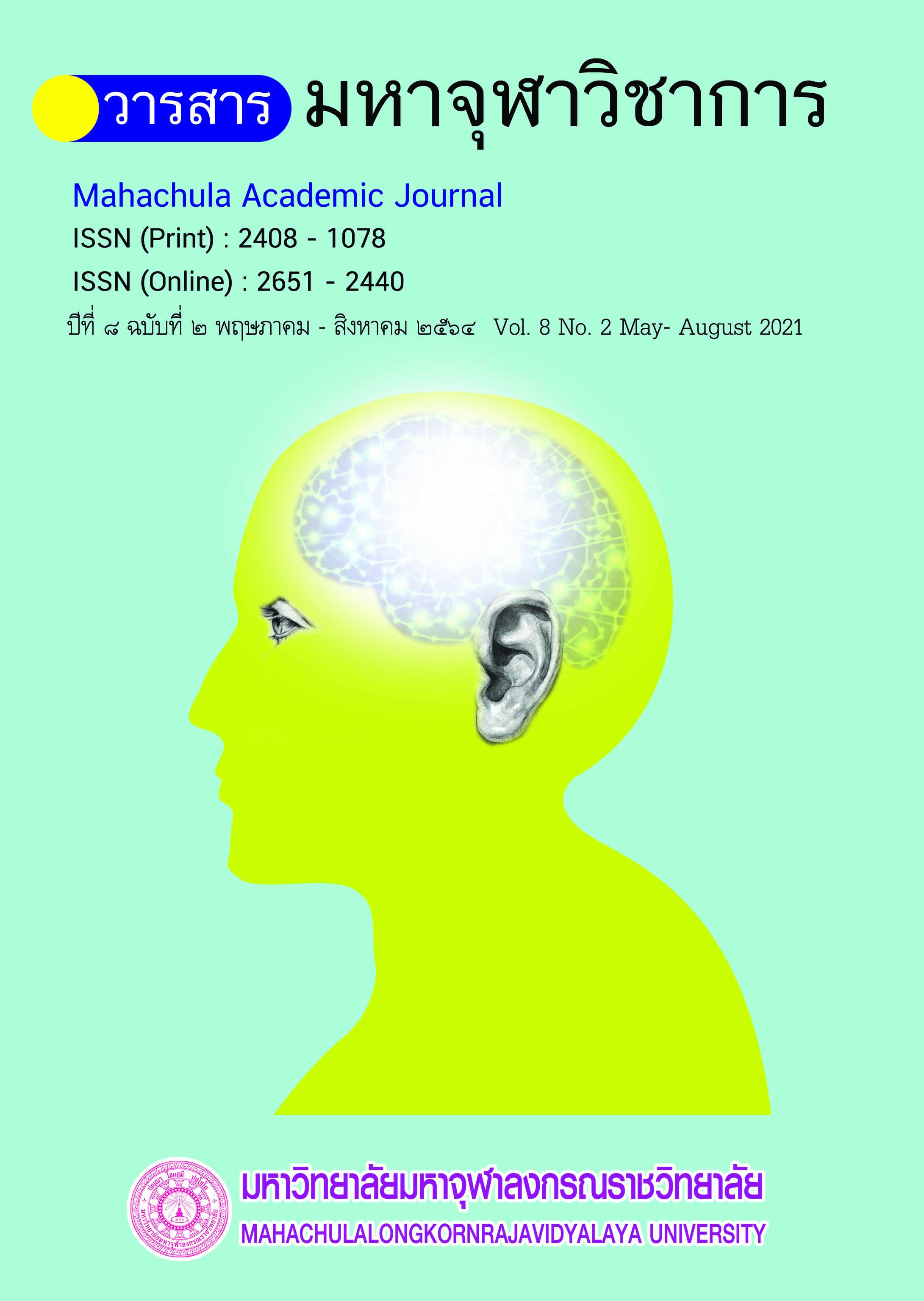A Comparative study of Søren Abbey Kierkegaard’s Existentialism and Buddhist Philosophy
Main Article Content
Abstract
This article aims to analyze “A Comparative Study of Søren Abbey Kierkegaard’s Existentialism and Buddhist Philosophy” is of 3 objectives: (1) to study Soren abbey Kierkegaard’s concept of the Existentialism; (2) to study the concept of the Existentialism in Buddhist philosophy; and (3) to Comparative study of Søren abbey Kierkegaard’s existentialism and Buddhist Philosophy. This is a qualitative research. In the study of the first objective, it was found that the Søren Abbey Kierkegaard’s suggesting that human life will exist by interacting with society and others In which each human being must have an individual identity and must have the goal of an ontic dimension in the real world, not a fictional world. Which later, the individual concept was expanded to 3 levels: 1) Aesthetical stage, 2) Ethical stage, 3) Religious and religious status to connect. Linking faith to God, purifying his mind purely. And Buddhist philosophy looking at the world and the life that appears in the history of Prince Siddhartha Who saw the big problems of human beings, therefore began to find solutions Finally, choosing the way of seeking truth and the meaning of his life falls under the laws of trinity, namely every Aniccatà, Dukkhatà, Anattatà, but with the unaware of the human being enters into capturing the group of elements. All with the power of a misunderstood desire to be an individual but the truth is Condition of emptiness.
Accordingly Søren Abbey Kierkegaard’s giving importance to the faith which is the anchor of the mind In order not to raise consciousness with the social environment around himself because it will make himself go wrong with God But in Buddhist philosophy, it is important in the Three Characteristics (Tilakkhaṇa). Therefore, the two existential philosophies therefore focus on the "essence of religion".
Article Details
References
มหาจุฬาลงกรณราชวิทยาลัย.พระไตรปิฎกภาษาไทย ฉบับมหาจุฬาลงกรณราชวิทยาลัย. กรุงเทพมหานคร : โรงพิมพ์มหาจุฬาลงกรณราชวิทยาลัย, ๒๕๓๙.
สมาคมพระคริสตธรรมไทย. พระคริสตธรรมคัมภีร์ (Thai Holy Bible) ฉบับ ค.ศ. ๑๙๗๑ (ขนาดย่อ ปี ค.ศ.๑๙๙๘). พิมพ์ครั้งที่ ๒๘. กรุงเทพมหานคร : สมาคมพระคริสตธรรมไทย, ๒๕๕๓.
Kierkegaard’s. Fear and Trembling and Repetition. trans. Howard V. Hong and Edna H. Hong. Princeton, New jersey : Princeton University Press, 1983.
Kierkegaard’s. Provocations. Ed. Charles E. Moore. The Bruderh of Foundation Inc. United Kingdom, 2002.
Kierkegaard’s. The Essential. trans. Howard V. Hong and Edna H. Hong. Princeton. New jersey : Princeton University Press, 2000.
Kierkegaard’s. Stages on life’s way. trans. Howard V. Hong and Edna H. Hong . Princeton, New jersey : Princeton University Press, 1988.
Kierkegaard’s. Training in Christianity. trans. Walter Lowrie, London : Oxford University Press, 1944.
Joakim Garff. Soran Kierkegaard A Biography. Princeton. New jersey : Princeton University Press, 2005.


